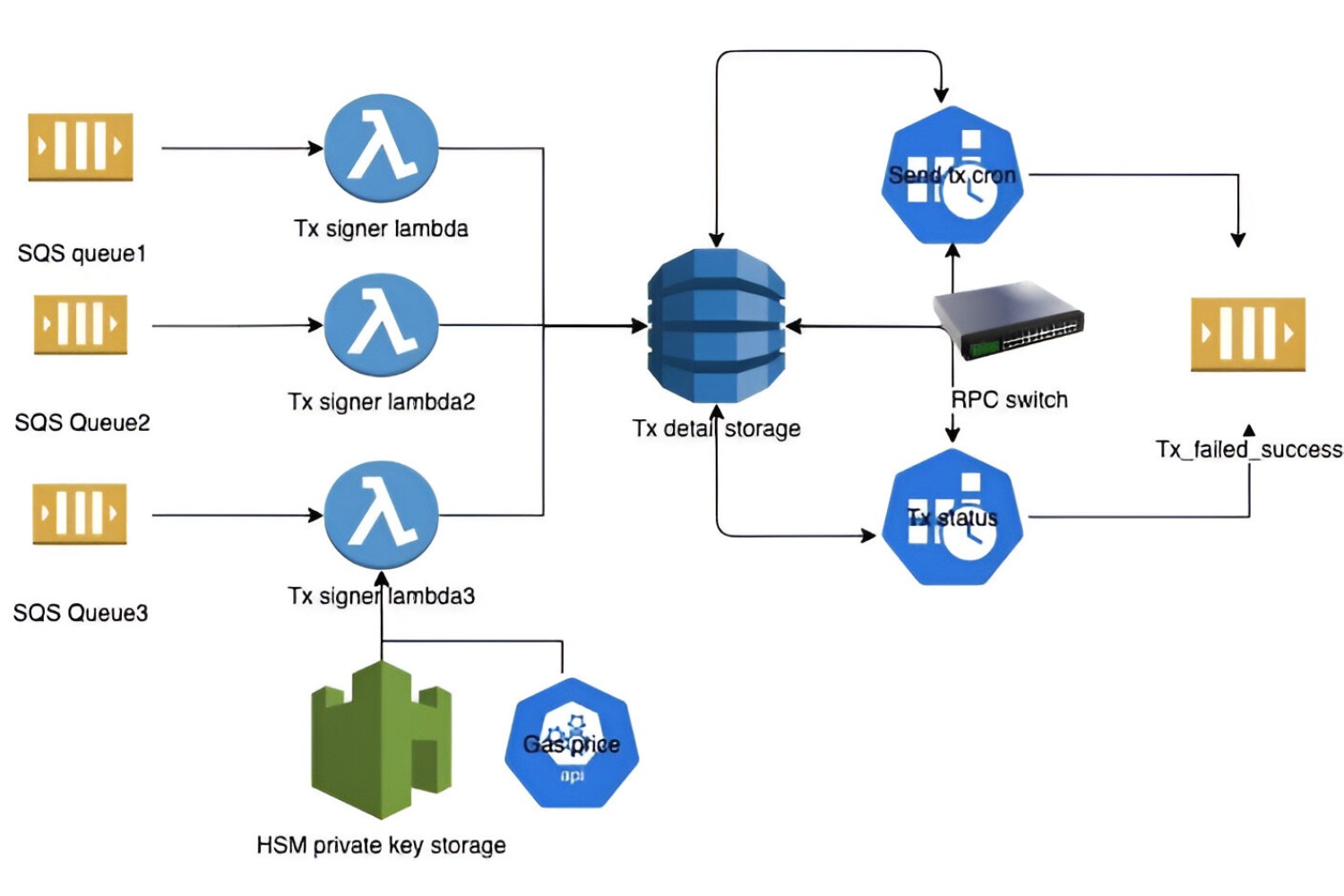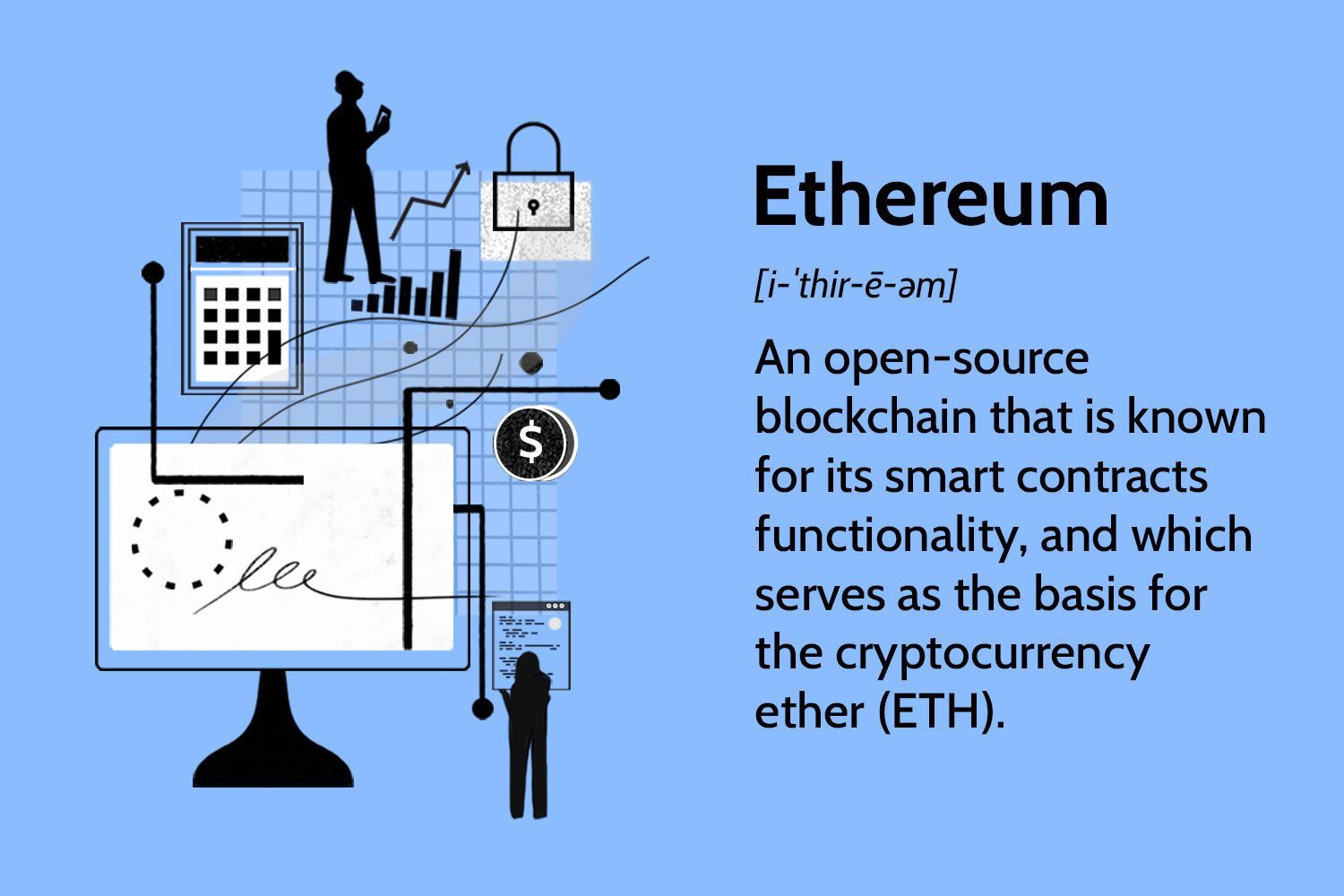Introduction
Welcome to the exciting world of Ethereum smart contracts! In today’s digital age, the concept of smart contracts has gained significant popularity and is revolutionizing various industries. Whether you’re a technology enthusiast, a developer, or simply curious about how things work behind the scenes in the blockchain space, this article will provide you with a comprehensive understanding of Ethereum smart contracts.
Smart contracts are essentially self-executing agreements that are written in code and stored on the Ethereum blockchain. They allow for the automation of processes, eliminating the need for intermediaries and increasing transparency and efficiency. Ethereum, often described as a decentralized virtual machine, enables the creation and execution of these smart contracts.
In this article, we will delve into the fundamentals of Ethereum smart contracts and explore how they work. We’ll also discuss the Ethereum Virtual Machine (EVM), the programming language used to write smart contracts – Solidity, and the deployment and interaction process with smart contracts on the Ethereum network. Additionally, we’ll examine the crucial aspects of smart contract security considerations. So, let’s dive in!
Ethereum smart contracts have opened endless possibilities for innovation and disruption across various industries. From finance to supply chain management and even decentralized applications (DApps), smart contracts have the potential to revolutionize the way we transact and interact with each other.
With that in mind, it’s important to note that this article aims to provide a high-level overview of Ethereum smart contracts. It’s always recommended to consult in-depth resources and conduct thorough research if you plan to engage in developing or utilizing smart contracts in a production environment. Now, let’s explore the inner workings of Ethereum smart contracts and uncover the technological marvel that powers them.
What are Ethereum Smart Contracts?
Ethereum smart contracts are self-executing contracts with predefined rules and conditions encoded in computer code. These contracts are stored on the Ethereum blockchain, a decentralized and distributed network of computers that enables secure and transparent execution of transactions without the need for intermediaries.
Unlike traditional contracts, which require intermediaries such as lawyers or banks to enforce and validate the terms, Ethereum smart contracts are capable of automatically executing and enforcing these terms without the need for a trusted third party. This decentralized approach eliminates the need for intermediaries, reduces costs, and increases efficiency.
Smart contracts on the Ethereum blockchain can be used to handle a wide range of transactions and agreements, such as financial transfers, supply chain management, voting systems, digital identities, and more. They provide a secure and transparent way to execute agreements between multiple parties, ensuring that the terms are automatically enforced.
One of the key advantages of Ethereum smart contracts is their programmability. Smart contracts are written in a programming language called Solidity, which allows developers to define the logic and conditions of the contract. This opens up a world of possibilities for creating complex and dynamic agreements that can respond to real-time events and trigger actions accordingly.
Another important aspect of Ethereum smart contracts is their immutability. Once deployed on the Ethereum blockchain, smart contracts cannot be modified or tampered with. This ensures that the terms and conditions of the contract remain immutable and cannot be altered by any party, providing a high level of trust and security.
In essence, Ethereum smart contracts enable the automation of trust and enable the execution of agreements in a secure and transparent manner. By eliminating the need for intermediaries and offering programmable features, smart contracts have the potential to revolutionize traditional business processes and open up innovative possibilities across various industries.
In the following sections, we’ll explore how Ethereum smart contracts work, the role of the Ethereum Virtual Machine (EVM), the process of writing and deploying smart contracts, and the considerations for smart contract security. So, let’s continue our journey into the fascinating world of Ethereum smart contracts!
How do Ethereum Smart Contracts Work?
Understanding how Ethereum smart contracts work is key to appreciating their potential and applications. At its core, Ethereum is a decentralized platform that runs smart contracts written in a programming language called Solidity. These smart contracts are stored and executed on the Ethereum Virtual Machine (EVM), a runtime environment specifically designed for executing smart contracts.
The EVM is a Turing-complete virtual machine, meaning it can perform any computation that can be expressed algorithmically. It enables the execution of smart contracts in a secure and deterministic manner across the network of Ethereum nodes. Each node on the network maintains a copy of the entire blockchain, including all the smart contracts and their states.
When a smart contract is deployed on the Ethereum network, it is assigned a unique address. This address serves as an identifier for the contract and allows participants to interact with it. To interact with a smart contract, users can send transactions to the contract’s address, invoking specific functions defined within the contract’s code.
Once a transaction is submitted, it is validated and executed by the Ethereum network. The decentralized nature of the network ensures that multiple nodes reach a consensus on the validity and execution of each transaction. This consensus mechanism, known as proof of work, provides security and prevents malicious actors from tampering with the network.
Upon execution, smart contracts can manipulate variables, store data on the blockchain, and interact with other contracts. They can perform complex operations, such as arithmetic calculations, conditional statements, loops, and event handling. These capabilities allow for the automation of various processes and the creation of decentralized applications.
Smart contracts on the Ethereum network are executed using a payment system called Gas. Gas measures the computational steps required to execute a smart contract transaction. Each step has a cost associated with it, and users need to include a sufficient amount of Gas to cover the computation required for their desired transaction.
The Gas mechanism ensures that the Ethereum network remains efficient and prevents malicious or resource-intensive code from congesting the network. It also incentivizes efficient contract programming, as developers strive to minimize Gas costs to make their contracts more appealing to users.
Overall, Ethereum smart contracts operate on a robust infrastructure that allows for decentralized execution, immutability, and transparency. By employing the EVM and the Gas mechanism, Ethereum provides a powerful platform for executing complex smart contract logic and enabling a wide range of decentralized applications.
In the next sections, we’ll explore the process of writing smart contracts using Solidity, the deployment of smart contracts on the Ethereum network, and the ways in which users can interact with deployed contracts. Stay tuned!
The Ethereum Virtual Machine (EVM)
The Ethereum Virtual Machine (EVM) is the runtime environment where smart contracts are executed on the Ethereum network. It is a key component of the Ethereum ecosystem and plays a crucial role in ensuring the security and deterministic execution of smart contracts.
The EVM is a sandboxed environment, meaning it provides an isolated and secure execution environment for smart contracts. This isolation ensures that each smart contract operates independently, without interference from other contracts or the underlying operating system. This architectural design enhances security by preventing malicious code from affecting the overall integrity of the system.
One of the remarkable features of the EVM is its Turing-completeness, which means it can perform any computation that can be expressed algorithmically. This computational universality allows for powerful and dynamic smart contracts to be created and executed on the Ethereum network.
The EVM executes smart contracts using a stack-based bytecode language known as EVM bytecode. Each operation in the bytecode, such as mathematical calculations or storing data, is performed by pushing values onto the stack, manipulating them, and retrieving results. This stack-based approach ensures efficient execution and enables complex computations to be carried out within smart contracts.
Another important aspect of the EVM is the Gas mechanism, which is used to govern the execution of smart contract transactions. Gas measures the computational effort required to execute a transaction and is denominated in a unit called Gas. Each EVM opcode has a specific Gas cost associated with it, which defines the amount of Gas required to execute that operation.
When a user submits a smart contract transaction, they must include a sufficient amount of Gas to cover the computational steps needed for its execution. If the Gas provided is not enough, the transaction will fail and any changes made within the contract will be reverted, ensuring that the network remains efficient and prevents abuse of computational resources.
The Gas mechanism incentivizes developers to write efficient and optimized smart contracts, as it directly impacts the cost of executing their contracts on the Ethereum network. It encourages code optimization, resource management, and avoiding unnecessary computations, ultimately leading to more efficient and cost-effective smart contracts.
Overall, the Ethereum Virtual Machine is a critical component of the Ethereum network that enables the execution of smart contracts in a secure, isolated, and deterministic manner. Through its Turing-completeness, stack-based bytecode language, and Gas mechanism, the EVM provides a powerful and efficient platform for executing complex smart contract logic on the Ethereum blockchain.
In the following sections, we’ll explore the process of writing smart contracts using the Solidity programming language, the deployment of smart contracts on the Ethereum network, and how users can interact with deployed contracts. Let’s continue our journey into the world of Ethereum smart contracts!
Writing Smart Contracts with Solidity
Solidity is the programming language used for writing smart contracts on the Ethereum platform. It is specifically designed to be used with the Ethereum Virtual Machine (EVM) and provides developers with a simple yet powerful language to define the logic and behavior of their smart contracts.
Solidity is a statically typed language, meaning that variables must have their types explicitly declared at compile-time. This helps prevent programming mistakes and ensures the correctness of the code. Solidity supports various data types, including integers, booleans, strings, arrays, and custom data structures.
When writing smart contracts in Solidity, developers define the contract’s structure, functions, and variables. They can also define modifiers, events, and custom data types specific to their smart contract logic. Solidity provides a range of features, such as control structures (if-else statements, loops), inheritance, and error handling, to assist developers in creating sophisticated smart contracts.
One of the key concepts in Solidity is the concept of smart contract lifecycle and state. Contracts can have different states based on the conditions defined within their code. For example, a contract may have an initialization state, an active state, or a finalization state. Developers can define the conditions for transitioning between different states within their contracts.
To interact with other contracts or the Ethereum network, Solidity provides a set of global variables, such as msg.sender (the address of the caller), msg.value (the value attached to the function call), and block.timestamp (the timestamp of the current block). These variables enable developers to access important information about the context in which the contract is being executed.
Once the smart contract code is finalized, it is compiled into EVM bytecode using a Solidity compiler. This bytecode can then be deployed on the Ethereum network, and the resulting address serves as the identifier for the contract. The bytecode contains the logic, rules, and conditions defined in the contract, enabling the decentralized execution and enforcement of its terms.
Developers have a range of development tools and integrated development environments (IDEs) to assist them in writing and testing smart contracts in Solidity. These tools provide features like syntax highlighting, code analysis, and test frameworks that help ensure the code’s quality and functionality before deployment.
Writing smart contracts with Solidity requires a deep understanding of both the programming language and the Ethereum network. It is important for developers to consider security best practices, such as avoiding common vulnerabilities like reentrancy attacks and integer overflows, and ensuring proper testing and auditing of their contracts.
In the next section, we’ll explore the process of deploying smart contracts on the Ethereum network, including how contracts are compiled, verified, and initialized on the blockchain. Join us as we dive deeper into the world of Ethereum smart contracts!
Deploying Smart Contracts on the Ethereum Network
Deploying a smart contract on the Ethereum network involves compiling the Solidity code into EVM bytecode and then initializing and storing the contract on the blockchain. This process is crucial for making the smart contract accessible and usable by participants on the Ethereum network.
Before a smart contract can be deployed, it needs to go through the compilation process. Solidity code is compiled using a Solidity compiler, which translates the human-readable code into machine-readable bytecode that can be understood and executed by the Ethereum Virtual Machine (EVM).
Once the contract is compiled, it needs to be deployed to the Ethereum network. Deploying a contract involves creating a transaction that contains the bytecode of the contract, along with any initialization parameters if the contract has constructor arguments. This transaction is then sent to a miner, who includes it in a block and adds it to the blockchain.
When a contract is deployed, it is assigned a unique address on the Ethereum network. This address serves as the identifier for the contract and allows participants to interact with it. The contract’s address is generated based on the sender’s address, the sender’s nonce (a value used to generate a unique transaction hash), and other factors.
Once deployed, the contract and its bytecode are permanently stored on the Ethereum blockchain, guaranteeing the immutability and transparency of the contract’s code. Users can verify the contract’s bytecode against its address on block explorers or by querying the Ethereum blockchain to ensure the integrity of the deployed contract.
Smart contracts on the Ethereum network can hold state and can be updated by invoking functions defined within the contract. These functions can be called by anyone on the network as long as they have access to the contract’s address. The state changes made by these function calls are recorded on the blockchain, ensuring the transparency and accountability of the contract’s execution.
It’s worth noting that deploying a smart contract on the Ethereum network incurs a cost in the form of Gas. Gas is the unit used to measure computational effort and is paid by the initiator of the transaction. The Gas cost for deploying a contract depends on its complexity and the amount of storage required.
To ensure the successful deployment of a smart contract, developers should thoroughly test their contracts in a development environment and conduct proper security audits before deploying them on the mainnet. This helps identify any bugs or vulnerabilities and ensures the integrity and functionality of the deployed contract.
In the following section, we’ll explore how participants can interact with deployed smart contracts on the Ethereum network, including reading contract data and invoking contract functions. Stay with us as we delve deeper into the world of Ethereum smart contracts!
Interacting with Smart Contracts
Once a smart contract is deployed on the Ethereum network, participants can interact with it by reading its data or invoking its functions. This interaction allows users to retrieve information from the contract, perform actions within the contract, and trigger specific behaviors encoded in the contract’s code.
To interact with a smart contract, users need to know its address on the Ethereum network. The contract’s address serves as its unique identifier and allows participants to send transactions to the contract. These transactions can be used to invoke specific functions defined within the contract.
When interacting with a smart contract, participants typically use a wallet application or a decentralized application (DApp) interface that connects to the Ethereum network. This interface allows users to interact with the contract by sending signed transactions to the network.
Reading data from a smart contract is a straightforward process. Users can send a read-only transaction to the contract, which executes a function that returns specific data stored within the contract. This data can include variables, states, or other information defined within the contract’s code. Participants can retrieve this data and use it for various purposes, such as displaying contract information or making informed decisions based on the contract’s state.
Invoking functions within a smart contract allows participants to execute specific actions encoded in the contract’s code. These functions can perform a broad range of tasks, such as transferring tokens, updating states, interacting with other contracts, or executing specific business logic. Participants send a transaction with the necessary parameters to the contract, and the function is triggered, performing the desired action.
When invoking contract functions, users need to provide the necessary Gas to cover the computational cost of the function execution. The Gas cost depends on the complexity and resource requirements of the function. This incentivizes efficient contract programming and prevents abuse of the Ethereum network’s computational resources.
Smart contracts also support events, which allow contracts to emit signals or messages when certain conditions are met. Events can be captured and monitored by participants, providing a way to react to specific contract states or events. Events are often used for real-time notifications, logging, or triggering off-chain actions based on contract events.
Interacting with smart contracts on the Ethereum network opens up a world of possibilities for various applications and use cases. It enables secure, transparent, and decentralized interactions between participants, without the need for trust in a central authority.
In the next section, we’ll explore some important considerations and best practices for smart contract security. Join us as we dive into the critical aspects of ensuring the safety and integrity of smart contracts in the ever-evolving blockchain landscape!
Smart Contract Security Considerations
When developing and deploying smart contracts on the Ethereum network, it is crucial to consider various security considerations to mitigate potential risks and vulnerabilities. Smart contracts, once deployed, are immutable, and any bugs or vulnerabilities can have significant and irreversible consequences. Here are some key security considerations:
- Audit and Code Review: It is essential to thoroughly review and audit the smart contract code to identify and rectify any potential vulnerabilities. Enlisting the help of security experts or engaging in third-party security audits can significantly reduce the risk of vulnerabilities.
- Secure Coding Practices: Following secure coding practices can help mitigate common security vulnerabilities. This includes using safe coding patterns, validating user inputs, properly handling external calls, and robust error handling.
- Gas Limit: Carefully assess the gas limit when deploying a contract. Insufficient gas can cause the deployment to fail, while an excessively high gas limit can lead to vulnerabilities such as denial-of-service attacks or gas exhaustion.
- Access Control: Implement proper access control mechanisms to ensure that only authorized users can invoke critical functions or modify contract states. Unauthorized access can result in unauthorized transfers or manipulation of contract data.
- Data Validation: Thoroughly validate all user input to prevent vulnerabilities such as integer overflow, underflow, or reentrancy attacks. Lack of proper input validation can lead to unexpected or malicious behavior within the contract.
- External Dependencies: Be cautious when integrating external dependencies, such as libraries or oracles, into your smart contract. Ensure that these dependencies are trustworthy and thoroughly audited to avoid potential vulnerabilities or security risks.
- Immutable Contracts: Once a contract is deployed, it cannot be modified. Therefore, it is crucial to thoroughly test and audit the contract’s code before deployment to avoid any irreversible issues or vulnerabilities.
- Upgradeability: If the contract design allows for upgradability, ensure that upgrade processes are secure and well-audited to prevent unauthorized modifications or malicious upgrades.
- Continuous Monitoring: Continuously monitor the contract for any potential anomalies, unexpected behaviors, or security breaches. Establish mechanisms to detect and react to such events promptly.
Adhering to these security considerations significantly reduces the risk of vulnerabilities and helps ensure the integrity and functionality of your smart contracts on the Ethereum network. By following best practices and leveraging external security audits, developers can enhance the robustness and trustworthiness of their smart contracts.
While these security considerations provide a strong foundation, it is important to stay updated with the latest security practices and emerging vulnerabilities in the blockchain ecosystem. The rapidly evolving nature of the technology requires continuous learning, vigilance, and adaptation to ensure the highest level of security for smart contracts.
In the next section, we’ll conclude our exploration of Ethereum smart contracts, summarizing the key points discussed and emphasizing the significance of this groundbreaking technology in reshaping industries and enhancing transactional efficiency. Stay tuned!
Conclusion
Ethereum smart contracts have brought about a paradigm shift in how agreements and transactions are conducted. These self-executing contracts, written in code and stored on the Ethereum blockchain, enable automation, transparency, and efficiency in a decentralized manner. Throughout this article, we have explored the key aspects of Ethereum smart contracts, from their definition and operation to the considerations for writing, deploying, and interacting with them.
We started by understanding the fundamental concept of Ethereum smart contracts and how they eliminate the need for intermediaries, thereby streamlining processes and reducing costs. We then delved into the inner workings of smart contracts, exploring the Ethereum Virtual Machine (EVM) and the programming language Solidity used for writing contracts.
We learned how smart contracts are deployed on the Ethereum network, ensuring immutability and transparency. The ability to interact with smart contracts through reading data and invoking functions was highlighted, showcasing the decentralized nature of these contracts and the opportunities they present.
Security considerations were underscored, emphasizing the importance of thorough audits, secure coding practices, access control, data validation, and continuous monitoring to mitigate vulnerabilities and ensure the robustness of smart contracts. By adhering to these considerations, participants can have confidence in the integrity of the contracts and the protection of their assets.
Ethereum smart contracts have opened a world of innovation across industries, revolutionizing finance, supply chain management, governance systems, and more. The potential for creating decentralized applications and reimagining traditional business processes is immense.
As the blockchain landscape evolves, it is crucial to stay informed about best practices, emerging vulnerabilities, and advancements in smart contract security. By continually educating ourselves and adopting proactive security measures, we can harness the full potential of Ethereum smart contracts and build a more transparent, efficient, and trustworthy digital ecosystem.
Incorporating smart contracts into our transactions and businesses holds great promise. By embracing this transformative technology, we can contribute to the growth and adoption of Ethereum and the broader blockchain ecosystem, creating a future where trust, efficiency, and fairness are the pillars of our digital interactions.

























